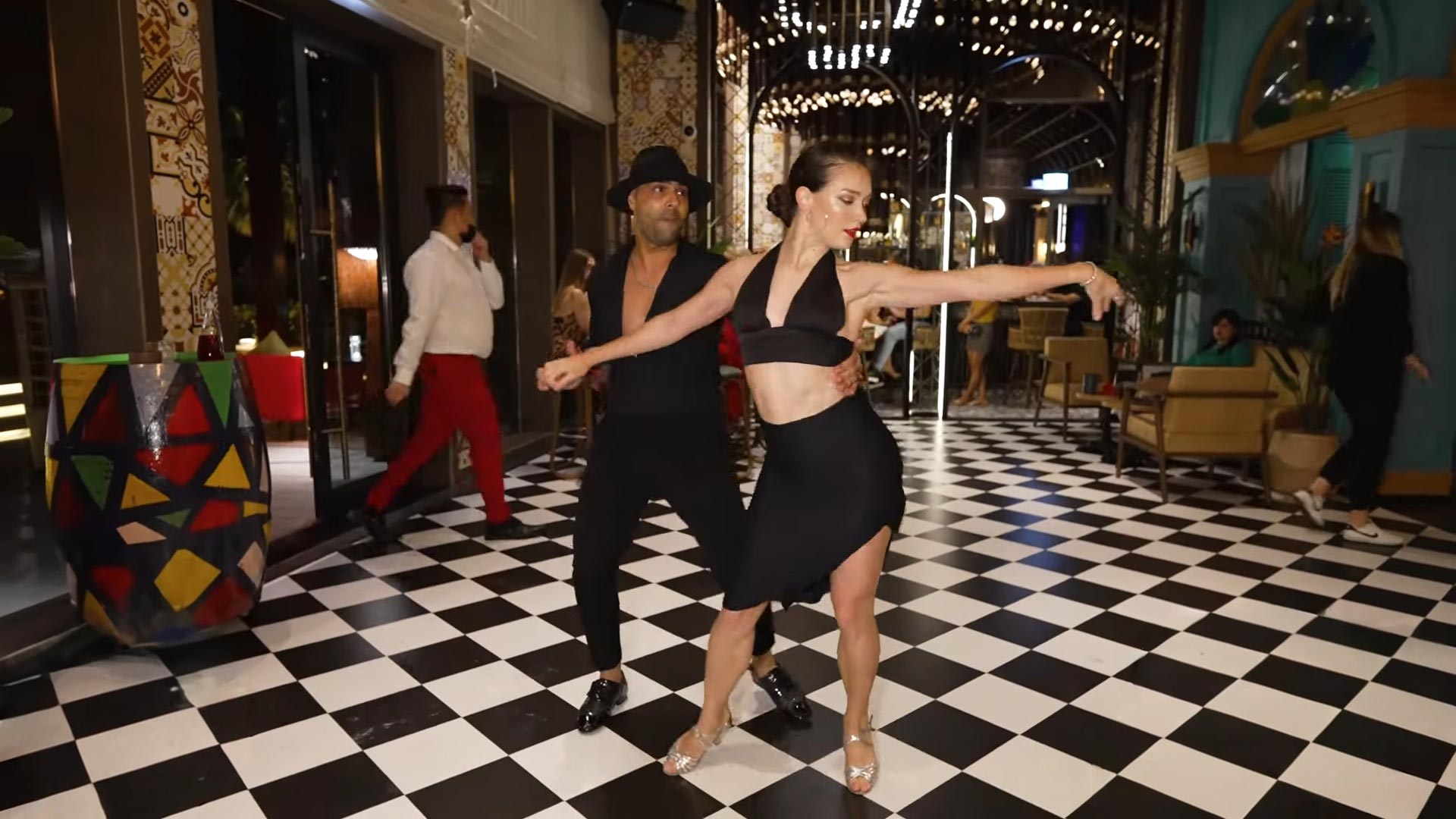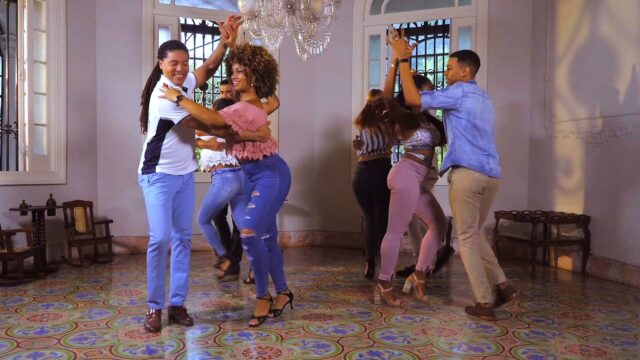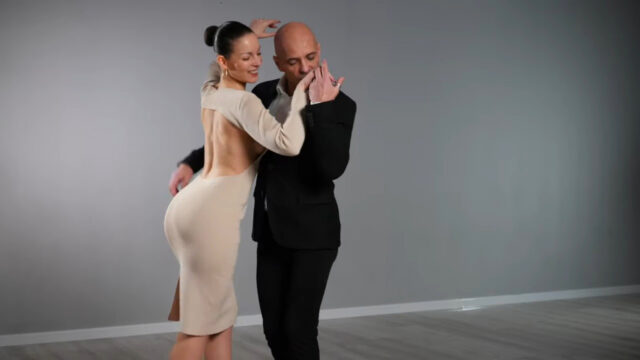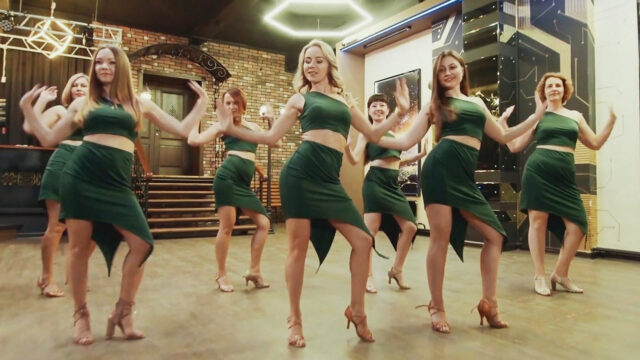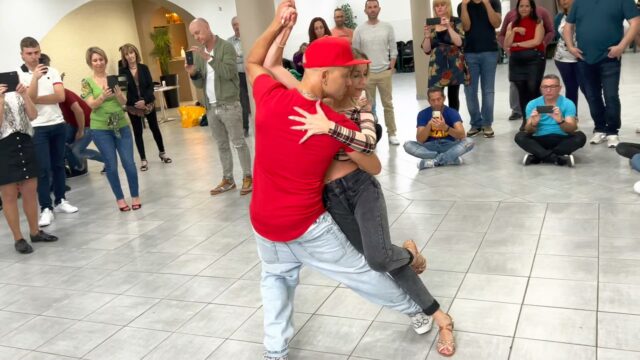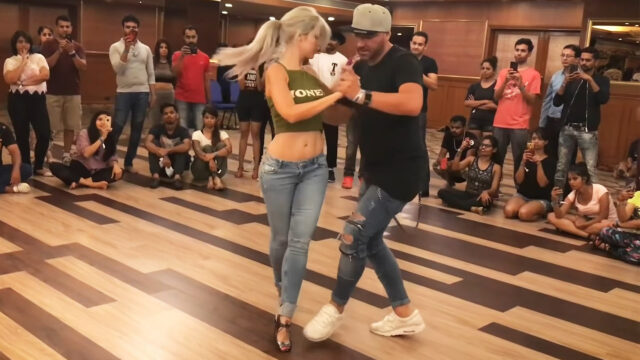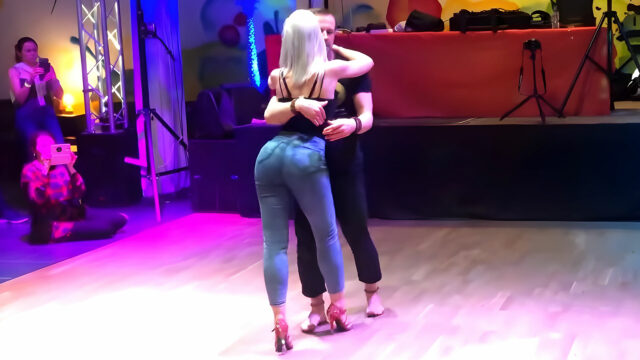Learning a new dance like salsa can seem daunting at first. Am I too old to pick up choreography? Will I embarrass myself in front of others? While valid concerns, the journey of a thousand steps begins with one, as the saying goes. When approached step-by-step, you’ll be surprised at how irrelevant the learning speed may become, because of how focused on the journey itself you’ll want to be. But before we begin, take a minute to check out this video of Fadi and Natasha:
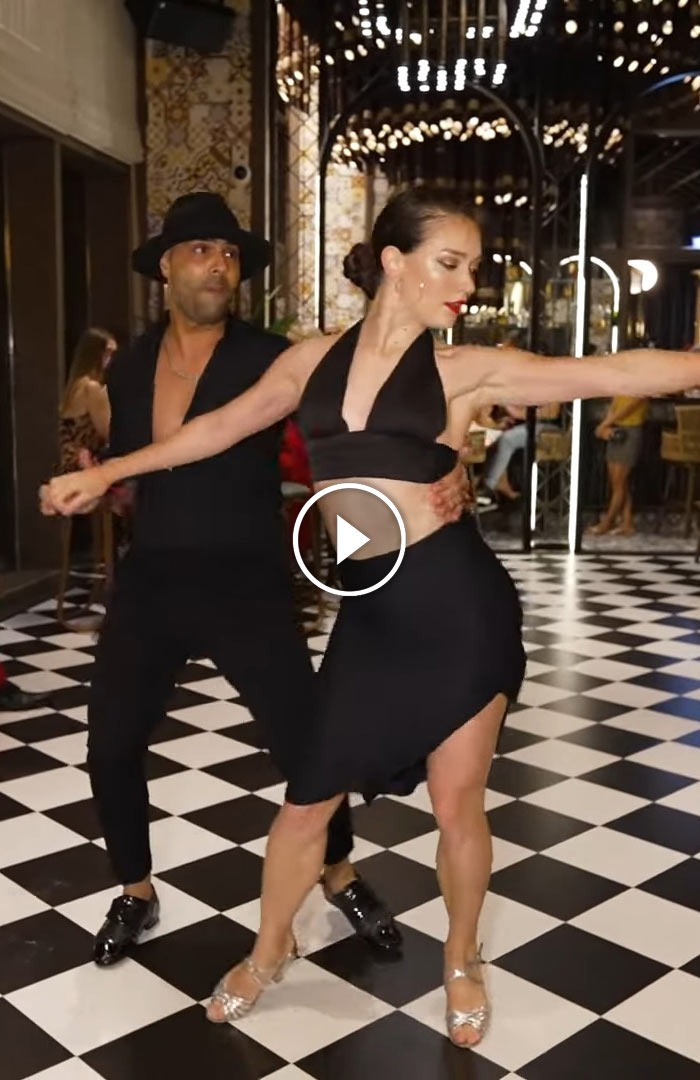
I want to be real with you, it will take many years of practice and dedication for most people to be able to dance like the couple in our today’s video. Some may not achieve such high level of technique at all. But I’m not telling you this to discourage, on the contrary. I’m here to recommend dropping any kind of expectations you might have and enjoy the process of learning. It’s just the best!
- How to Share Your Love of Dance With Friends
- Cuban Salsa: How it Differs from Linear Salsa Styles
- The Elegant Mindset: How Feeling Worthy Transcends into Dancefloor Chic
Salsa is one of the most difficult if not the most difficult social dance style today. However with some perseverance and patience over consistent practice, salsa can become second nature faster than imagined. Let’s break down the key considerations:
Defining Proficiency
First, as I mentioned earlier, we must set reasonable expectations. Few pick up extensive dance intricacies overnight. However, with regular applied effort, major leaps in ability happen for most between 3-6 months if you’re the lead, and 2-4 months if you’re a follow.
Within the beginner stage, lead fundamentals like the basic step and turns are targeted. After conquering basics, intermediate skills like styling, timing, and partner work arise. Once internalized, advanced techniques build on top – with continual refinement over years.
While subjective, a rough framework for benchmarks could be:
- Beginner: Learn basic steps, lead/follow, timing
- Intermediate: Lead turns, transitions, and styling
- Advanced: Refined technique, more styling and complex patterns
With smarter focused practice, fast progression can be achieved possibly. But how rapid your advancement seems will depend partly on the comparison level.
Time Commitment Matters
Salsa cannot be mastered overnight. Like playing the guitar, long-term skill building is inevitable for proficiency. However, putting in dedicated hours directly correlates to how swiftly competencies develop.
Let’s examine common training approaches:
- 1 Class Per Week:
Great for an introduction to basic steps, cannot ingrain muscle memory rapidly. - 2-3 Classes Per Week:
Faster refinement of technique, review and retention improves. - Immersive Training:
Intensive multi-hour session, rapid advancement possible.
Dance intensive bootcamps promise intense skill development through hours of drilling. But even consistent weekly practice generates noticeable progress over months. Whatever schedule chosen, realize skills decay without regular practice. Consistency breeds advancement.
Your Natural Aptitude
Natural affinity impacts progress curves too. Most can learn salsa yet may start from different baselines. Those with inherent rhythm or movement awareness likely have an initial edge.
Greater effort is then needed for others to catch up. However, motivation and grit can help bridge gaps for those less disposed towards dancing. Committed persistence pays over time.
Do not compare against others too quickly. Ultimately we each chart our own path. Progress at your pace through the beginner, intermediate and advanced phases.
Learning Techniques
Certain approaches may accelerate or hamper your development:
Positive Reinforcement
- Reward successes instead of critiquing every misstep. Rome wasn’t built in a day. Patience prevents frustration.
- Break challenges into smaller attainable goals. Mini-wins build confidence for greater feats.
Focused Repetition
- Nail fundamentals before advancing. Attempting too much too soon results in chaotic movement.
- Drill signature moves repetitively to engrain muscle memory. Change happens gradually.
Video Reference
- Record practice to spot improvement areas objectively. Our own perceptions may be skewed. Reviews prevent oversights.
- Watch pros demonstrate proper technique. Isolate and learn elements piecemeal if needed.
Freestyle Exploration
While structure has its place, don’t just stick to set patterns. Experimenting with intuitive self-expression is key for styles to emerge. Rigidity gives way when forms break. Through unbridled movement, innovation is found. The magic happens when learned lessons fuse with moments of improvised serendipity. Unleash your inner rhythm!
In Closing
Learning salsa takes time but yields immense rewards. While a year plus of consistent classes may be needed for advanced displays of technical virtuosity, social enjoyment can happen much sooner. Ultimately salsa is about the joyful self-expression that arises through partners moving in harmony to rhythms.
Rome wasn’t built in a day, but their mighty empire did have humble beginnings. Focus on your foundational blocks. Through smart structured practice, be patient but persistent. In time, with commitment and care, the fundamentals fuse into flowing intuitive dance.
If you enjoyed this article, feel free share it with your friends and let them know what you think about it. Also, consider checking out our most recent posts and stay in touch. Thank you!
